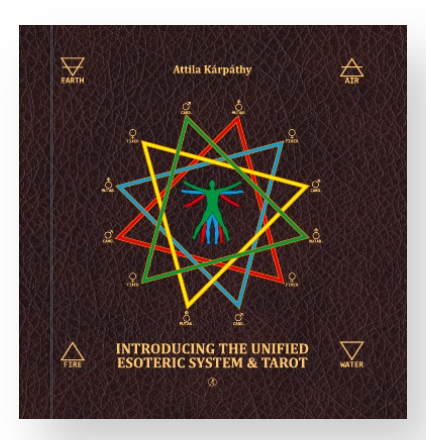 I love Alice. I loved his “Killer” from ’71, just like “School’s Out” and “Billion Dollar Babies” from ’72 and “Muscle of Love” from ’73. Then I loved “Welcome to My Nightmare” in 1975 and “Alice Cooper Goes to Hell” very next year. Later I loved “Special Forces” (’81), “Zipper Catches Skin” (’82), “DaDa” (’83), and “Constrictor” (’86). “Trash” (’89) and “Hey Stoopid” (’91) were both two great albums, “The Last Temptation” was alright and I really loved “Brutal Planet” in 2000 where Alice kind of give his answer to his followers and meanwhile new stars such as Marilyn Manson proving – once again – that he still have the power. But after that I kind of lost my appetite for Alice, “Dragontown” was at least a mediocre release while “Dirty Diamonds” sounds like a lost material from the 70s, not bad for that times, but quite outdated for the 2000s. Honestly, Alice didn’t really convinced me in 2008 with his concept album “Along Came a Spider”.
I love Alice. I loved his “Killer” from ’71, just like “School’s Out” and “Billion Dollar Babies” from ’72 and “Muscle of Love” from ’73. Then I loved “Welcome to My Nightmare” in 1975 and “Alice Cooper Goes to Hell” very next year. Later I loved “Special Forces” (’81), “Zipper Catches Skin” (’82), “DaDa” (’83), and “Constrictor” (’86). “Trash” (’89) and “Hey Stoopid” (’91) were both two great albums, “The Last Temptation” was alright and I really loved “Brutal Planet” in 2000 where Alice kind of give his answer to his followers and meanwhile new stars such as Marilyn Manson proving – once again – that he still have the power. But after that I kind of lost my appetite for Alice, “Dragontown” was at least a mediocre release while “Dirty Diamonds” sounds like a lost material from the 70s, not bad for that times, but quite outdated for the 2000s. Honestly, Alice didn’t really convinced me in 2008 with his concept album “Along Came a Spider”.
Then Alice planned to release a sequel of “Along Came a Spider”, but producer Bob Ezrin proposed instead the idea of a sequel to “Welcome to My Nightmare”, part of the thirtieth anniversary of its original release. Read more Alice Cooper – Welcome 2 My Nightmare (2011)
Yearly Archives: 2011
Judas Priest – Painkiller (1990)
 It was the 12th studio album by Judas Priest, and the original LP, cassette and CD versions were released on 3 September 1990. “Painkiller” was the first record with drummer Scott Travis, who was recruited from the band Saints Or Sinners and replaced Dave Holland who was behind the drum kit for two decades since 1979 and also it was the last record with founder member and lead singer Rob Halford who after the end of the Painkiller tour in 1991 left the band and to form the group named Fight under the heavy influence of bands such as Pantera and the new metal subgenre: groove metal. Scott Travis became drummer both for Judas Priest and Fight and Priest bring to the microphone the talented young American singer Tim ‘Ripper’ Owens for the following two albums “Jugulator” (1997) and “Demolition” (2001). Judas Priest and Rob Halford announced they would reunite in July 2003 and a new studio album, Angel of Retribution, was released on 1 March 2005. Read more Judas Priest – Painkiller (1990)
It was the 12th studio album by Judas Priest, and the original LP, cassette and CD versions were released on 3 September 1990. “Painkiller” was the first record with drummer Scott Travis, who was recruited from the band Saints Or Sinners and replaced Dave Holland who was behind the drum kit for two decades since 1979 and also it was the last record with founder member and lead singer Rob Halford who after the end of the Painkiller tour in 1991 left the band and to form the group named Fight under the heavy influence of bands such as Pantera and the new metal subgenre: groove metal. Scott Travis became drummer both for Judas Priest and Fight and Priest bring to the microphone the talented young American singer Tim ‘Ripper’ Owens for the following two albums “Jugulator” (1997) and “Demolition” (2001). Judas Priest and Rob Halford announced they would reunite in July 2003 and a new studio album, Angel of Retribution, was released on 1 March 2005. Read more Judas Priest – Painkiller (1990)
Dream Theater – A Dramatic Turn of Events (2011)
 Probably one of the most expected albums of this fall by metal fans. Three years after the epic “Black Clouds & Silver Linings”, the progressive metal band formed in 1985 by John Petrucci, John Myung, and Mike Portnoy while they attended Berklee College of Music in Massachusetts are back, first time without founding member, drummer Mike Portnoy. His departure raise higher the interest for this new material, but Mike Mangini can not be a disappointment for anybody. Metal fans probably remember his name from his contribution on Annihilator’s third album, “Set the World on Fire” released in 1993, but he also contributed to Extrem’s 95’s album, “Waiting For The Punchline” and more notably he was the drummer in Steve Vai’s live band and recorded several drum tracks for Steve’s “Fire Garden” and “The Ultra Zone” albums. Also Mangini was notorious for setting five World’s Fastest Drummer records between 2002-2005.
Probably one of the most expected albums of this fall by metal fans. Three years after the epic “Black Clouds & Silver Linings”, the progressive metal band formed in 1985 by John Petrucci, John Myung, and Mike Portnoy while they attended Berklee College of Music in Massachusetts are back, first time without founding member, drummer Mike Portnoy. His departure raise higher the interest for this new material, but Mike Mangini can not be a disappointment for anybody. Metal fans probably remember his name from his contribution on Annihilator’s third album, “Set the World on Fire” released in 1993, but he also contributed to Extrem’s 95’s album, “Waiting For The Punchline” and more notably he was the drummer in Steve Vai’s live band and recorded several drum tracks for Steve’s “Fire Garden” and “The Ultra Zone” albums. Also Mangini was notorious for setting five World’s Fastest Drummer records between 2002-2005.
The band’s 11th studio album, “A Dramatic Turn of Events” is scheduled for a September 13 release on Roadrunner Records. After several listening, this might be the best, the more balanced Dream Theater album so far. Well, I’m conscious, some said this about their previous album… and every new release of any band usually is nominated as their best, but this time Dream Theater actually quite managed to delivered their best. Read more Dream Theater – A Dramatic Turn of Events (2011)
Sepultura – Chaos A.D. (1993)
 I admit it: I wasn’t a Sepultura fan, but things have changed 18 years ago with their fifth studio album, “Chaos A.D.”. Released on 2nd September 1993, with this album Sepultura transcend from their previous death/thrash metal style into raw hardcore punk, a mixture of metal with industrial music and spiced with traditional Brazilian-styled percussion which eventually become one of the founding pillars of the groove metal subgenre along Pantera’s “Vulgar Display of Power”. “Chaos A.D.” established new direction, a new approach, a new standard for brutality, and not at least a new subgenre of metal. It seems in 1993 everything came together for Sepultura. Read more Sepultura – Chaos A.D. (1993)
I admit it: I wasn’t a Sepultura fan, but things have changed 18 years ago with their fifth studio album, “Chaos A.D.”. Released on 2nd September 1993, with this album Sepultura transcend from their previous death/thrash metal style into raw hardcore punk, a mixture of metal with industrial music and spiced with traditional Brazilian-styled percussion which eventually become one of the founding pillars of the groove metal subgenre along Pantera’s “Vulgar Display of Power”. “Chaos A.D.” established new direction, a new approach, a new standard for brutality, and not at least a new subgenre of metal. It seems in 1993 everything came together for Sepultura. Read more Sepultura – Chaos A.D. (1993)
Anathema – Falling Deeper (2011)
 Scheduled be released on September 5 2011, “Falling Deeper” is an upcoming compilation album in which the band recorded different versions of their past songs, a follow-up to 2008’s acoustic compilation “Hindsight”.
Scheduled be released on September 5 2011, “Falling Deeper” is an upcoming compilation album in which the band recorded different versions of their past songs, a follow-up to 2008’s acoustic compilation “Hindsight”.
The album was produced by guitarist and main composer of the band Daniel Cavanagh, while the orchestral arrangements are from Dave Stewart who worked so successfully with Anathema on “We’re Here Because We’re Here”. Dutch singer Anneke van Giersbergen sings on “Everwake”. The album was recorded and mixed by Andrea Wright at the legendary Parr Street Studios in Liverpool. Read more Anathema – Falling Deeper (2011)
Dead Can Dance – Spleen and Ideal (1986)
 There are bands and there are myths, legends. There are bands playing music and bands creating music, inventing new approaches, discovering new dimensions, tear down walls and open brand new highways. There are bands with one or two best records and bands with all their records being best ones. Some says, in the existence of the band the second album is the most important and it proves if the band have or haven’t potential. “Spleen and Ideal”, released on 1st September 1986 (in Australia), was Dead Can Dance’s second album and the band consist of Gerrard and Perry decided to abandon guitars in favor of classic symphonic instruments such as cello, trombones and timpani. A serious decision and one which probably change the course of the band’s history, but not only. Read more Dead Can Dance – Spleen and Ideal (1986)
There are bands and there are myths, legends. There are bands playing music and bands creating music, inventing new approaches, discovering new dimensions, tear down walls and open brand new highways. There are bands with one or two best records and bands with all their records being best ones. Some says, in the existence of the band the second album is the most important and it proves if the band have or haven’t potential. “Spleen and Ideal”, released on 1st September 1986 (in Australia), was Dead Can Dance’s second album and the band consist of Gerrard and Perry decided to abandon guitars in favor of classic symphonic instruments such as cello, trombones and timpani. A serious decision and one which probably change the course of the band’s history, but not only. Read more Dead Can Dance – Spleen and Ideal (1986)
Powerman 5000 – Copies, Clones and Replicants (2011)

 Michael Cummings aka Spider One is most known to being the younger brother of Rob Zombie. He’s also the founder and only original member of Powerman 5000 – sometimes abbreviated to PM5K – and their styles and sound have often been also compared to Rob Zombie. “Copies, Clones & Replicants” are a fun collection of cover tunes released yesterday, 30th August and we’ve got 12 songs originally performed by artist such as T. Rex, Devo, Van Halen, David Bowie, Twisted Sister, The Cars, The Clash, etc mashed up, twisted inside out and reassembled by PM5K in their music blender.
Michael Cummings aka Spider One is most known to being the younger brother of Rob Zombie. He’s also the founder and only original member of Powerman 5000 – sometimes abbreviated to PM5K – and their styles and sound have often been also compared to Rob Zombie. “Copies, Clones & Replicants” are a fun collection of cover tunes released yesterday, 30th August and we’ve got 12 songs originally performed by artist such as T. Rex, Devo, Van Halen, David Bowie, Twisted Sister, The Cars, The Clash, etc mashed up, twisted inside out and reassembled by PM5K in their music blender.
Spider One said they continue working on original material, consider this an interlude. Read more Powerman 5000 – Copies, Clones and Replicants (2011)
Killing Joke – Killing Joke (1980)
![Killing Joke - Killing Joke [1980] CD - Front](https://brushvox.com/wp-content/uploads/2011/08/Killing-Joke-Killing-Joke-1980-CD-Front-150x150.jpg) A real underground pearl, still not enough appreciated, but an undisputed underground classic, the self-titled studio debut album by the British Killing Joke was self-produced and released in August, 1980 worldwide under E’G Records. The song “The Wait” was covered by Metallica in 1987 and released on “The $5.98 E.P.: Garage Days Re-Revisited” and “Requiem” was covered by Foo Fighters in 1997 as a b-side to the “Everlong” single. Finding modest commercial success, Killing Joke have influenced many later bands, such as Nirvana, Ministry, Amen, Lamb of God, Nine Inch Nails, Porcupine Tree, Napalm Death, Behemoth, Amebix, Big Black, Opeth, Murderdolls, Godflesh, Dead by April, Tool, Prong, Metallica, Franz Ferdinand, Primus, Jane’s Addiction, Soundgarden, Foo Fighters, Faith No More, Blacklist, Shihad, Pitchshifter, Das Oath, Rammstein and Korn, and gained a cult status with their industrial metal among critics and both fans of post punk and heavy metal. Read more Killing Joke – Killing Joke (1980)
A real underground pearl, still not enough appreciated, but an undisputed underground classic, the self-titled studio debut album by the British Killing Joke was self-produced and released in August, 1980 worldwide under E’G Records. The song “The Wait” was covered by Metallica in 1987 and released on “The $5.98 E.P.: Garage Days Re-Revisited” and “Requiem” was covered by Foo Fighters in 1997 as a b-side to the “Everlong” single. Finding modest commercial success, Killing Joke have influenced many later bands, such as Nirvana, Ministry, Amen, Lamb of God, Nine Inch Nails, Porcupine Tree, Napalm Death, Behemoth, Amebix, Big Black, Opeth, Murderdolls, Godflesh, Dead by April, Tool, Prong, Metallica, Franz Ferdinand, Primus, Jane’s Addiction, Soundgarden, Foo Fighters, Faith No More, Blacklist, Shihad, Pitchshifter, Das Oath, Rammstein and Korn, and gained a cult status with their industrial metal among critics and both fans of post punk and heavy metal. Read more Killing Joke – Killing Joke (1980)
Buckethead – Empty Space, Underground Chamber, Look Up There (2011)
 Buckethead’s 32nd studio album, as well the second edition in the Buckethead Pikes series following “It’s Alive” . More experimental, much heavier, contorted, but beautiful, “Empty Space” with a total length of 32 minutes (ten songs) bring to the surface some intense riffs, noisy textures and wild, hurricane-like solos, but also funky basses, avant-garde experiments, industrial soundscapes, in few words, Buckethead shot all his big guns at our ears and once again he spare no energy to create music. Can’t stick labels to this, can’t force it into some boxes, his music have no genre, but style and class. Probably both, genius and madman, Buckethead is by excellence the most fascinating guitar wizard. Read more Buckethead – Empty Space, Underground Chamber, Look Up There (2011)
Buckethead’s 32nd studio album, as well the second edition in the Buckethead Pikes series following “It’s Alive” . More experimental, much heavier, contorted, but beautiful, “Empty Space” with a total length of 32 minutes (ten songs) bring to the surface some intense riffs, noisy textures and wild, hurricane-like solos, but also funky basses, avant-garde experiments, industrial soundscapes, in few words, Buckethead shot all his big guns at our ears and once again he spare no energy to create music. Can’t stick labels to this, can’t force it into some boxes, his music have no genre, but style and class. Probably both, genius and madman, Buckethead is by excellence the most fascinating guitar wizard. Read more Buckethead – Empty Space, Underground Chamber, Look Up There (2011)
The Libertines – The Libertines (2004)
 Coming on the second wave in the early 2000s of garage rock and post-punk revival bands along Arctic Monkeys, Bloc Party, The Editors and Franz Ferdinand, The Libertines delivered in 2004 their second, self-titled album which instantly reached #1 in the UK and it sold 72,189 copies in its first week. The album is included in the book “1001 Albums You Must Hear Before You Die” and in 2006, NME placed the album 47 in a list of the greatest British albums ever. For a band released up to date only two albums, not a bad performance at all.
Coming on the second wave in the early 2000s of garage rock and post-punk revival bands along Arctic Monkeys, Bloc Party, The Editors and Franz Ferdinand, The Libertines delivered in 2004 their second, self-titled album which instantly reached #1 in the UK and it sold 72,189 copies in its first week. The album is included in the book “1001 Albums You Must Hear Before You Die” and in 2006, NME placed the album 47 in a list of the greatest British albums ever. For a band released up to date only two albums, not a bad performance at all.
The Libertines were formed in London in 1997 by frontmen Carl Bar̢t (vocals/lead guitar) and Pete Doherty (vocals/rhythm guitar) and both of their full-length LPs were produced by Mick Jones, of the legendary British punk band The Clash. Read more The Libertines РThe Libertines (2004)







